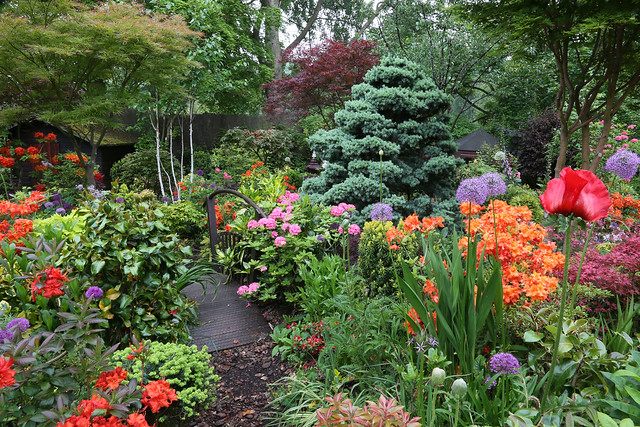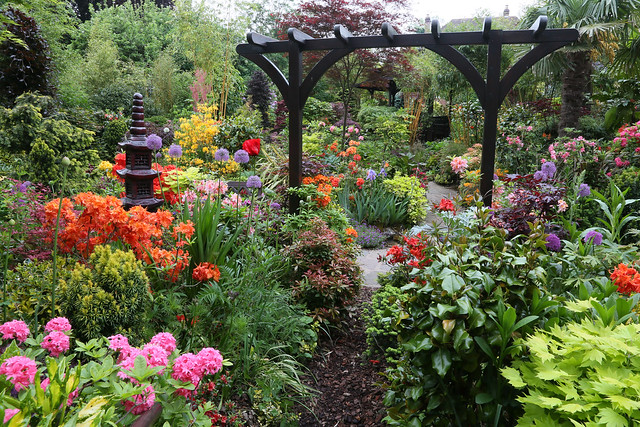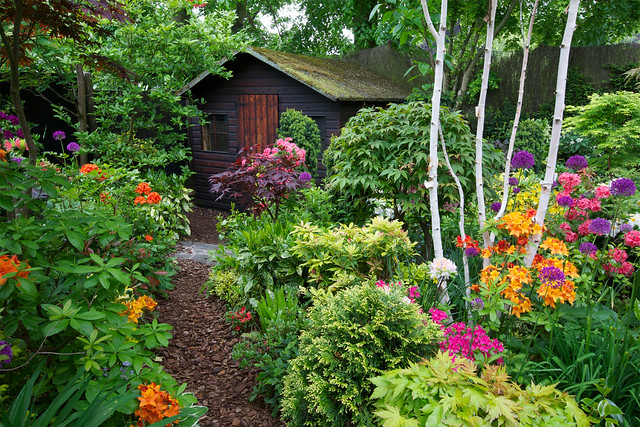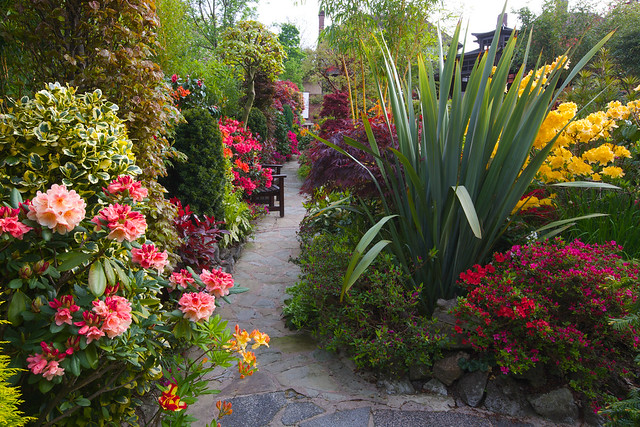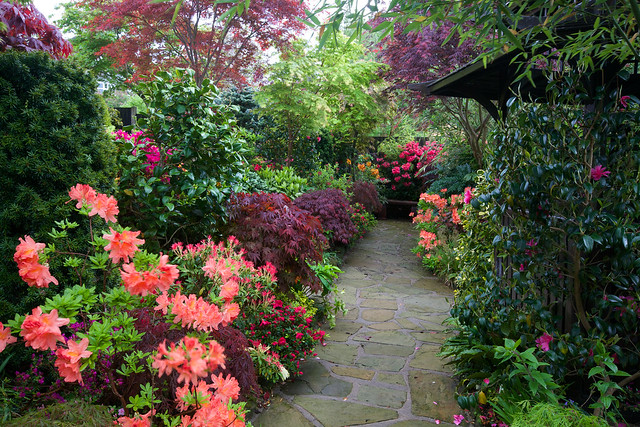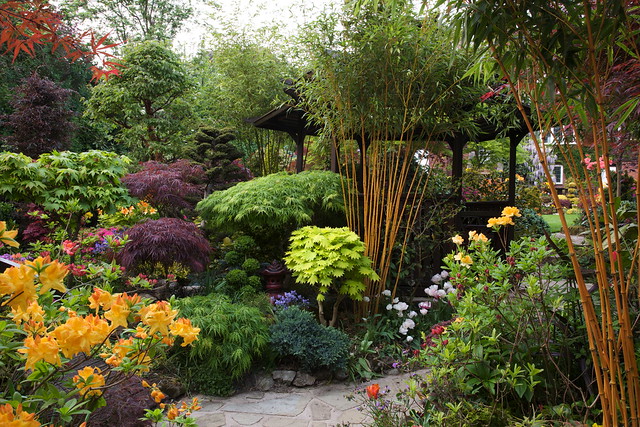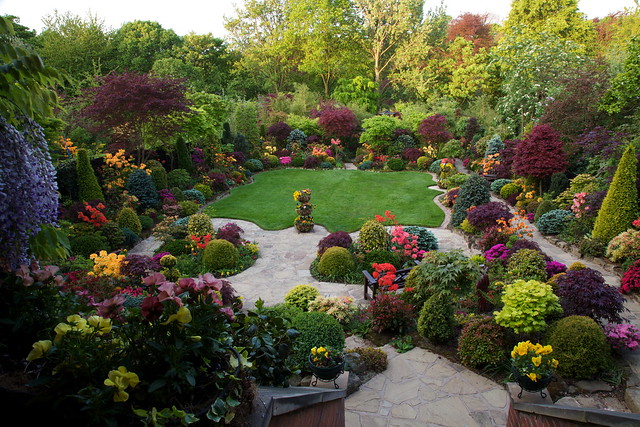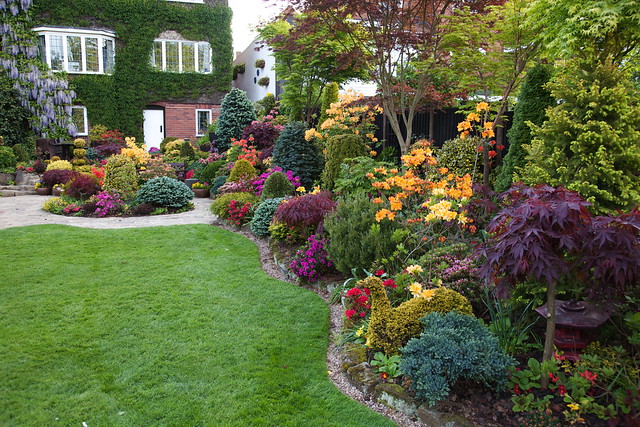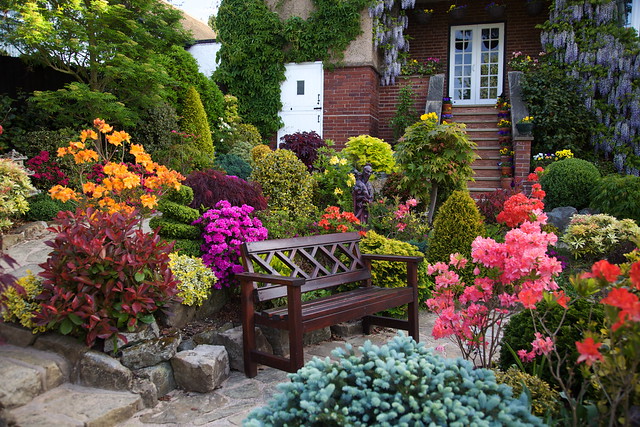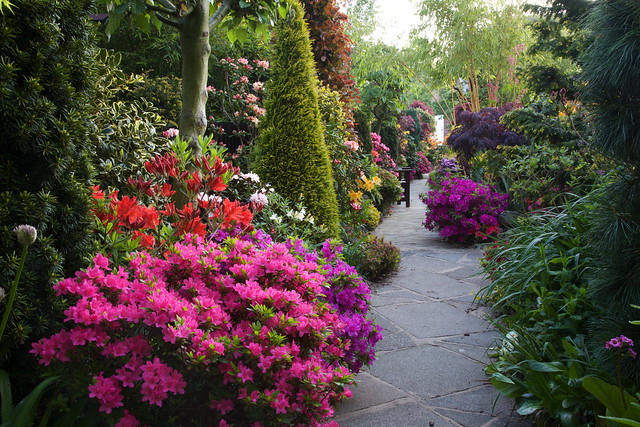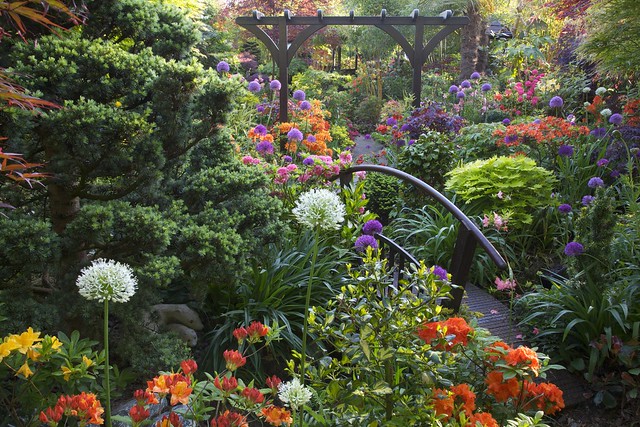Spring tasks
- A diary is useful for noting down reminders and key events in the garden. A rough sketch of the garden is helpful to mark where more colour is needed at different times of the year.
- When the lawn begins to grow in spring, we mow, rake and spike it with a fork to improve drainage. A very thin layer of mixed sand and fine compost is applied and lightly brushed into the grass. Finally, a dilute liquid lawn fertilizer is applied.
- Fences and wooden garden furniture are spruced up with a dark brown preservative to give a uniform colour and a strong contrast against the foliage.
- The compost heap is turned over in early spring to aerate and speed up the composting process so that it is ready for use in May.
- We search around the plants of hardy cyclamen, hellebores and aconites for self-set seedlings to transplant to different areas of the garden.
- We pinch out the growing tips on acers that we wish to keep to a compact shape and size.
- Overcrowded perennials, such as crocosmia, geranium and phlox are split up. The additional plants created are put elsewhere in the garden in groups of three, five or seven for maximum effect.
- In early spring, the tuberous begonias that have been over-wintered in a dry, frost-free area are put in a little damp compost to encourage growth. In late spring the sprouting tubers are planted in containers and tiered baskets in a half-and-half mixture of soil and home-produced compost, with the addition of long-acting fertilizer granules. Water storing granules are placed in the lower third of the compost to encourage the roots to search for moisture.
- Daffodils and tulips are deadheaded after flowering, but we wait six weeks before removing the leaves.
- We remove camellia and rhododendron flowers after blooming. About every two years we give a feed of acidic (ericaceous) fertilizer granules to azaleas, camellias, rhododendrons, and other acid-loving shrubs.
- Lilies live for many years in the ground, but there’s always space for more and these are planted in early spring. Lily plants need to be checked regularly for bright red lily beetles - especially on sunny days in spring and summer!
- A large decorative, ceramic, pot in the garden can be used throughout the year. However, by using a plastic pot insert, the floral display can be quickly changed for another plastic pot, which is already planted up for a different season. For example, in late spring we exchange winter flowering pansies for summer flowering begonias.
Four Seasons Sitemap
© All Rights Reserved
Please do not download our photo images from this website to use for publication or any commercial reason without our permission.
Images may not be copied, reproduced, published or distributed in any medium without the expressed written permission of the copyright holder.


